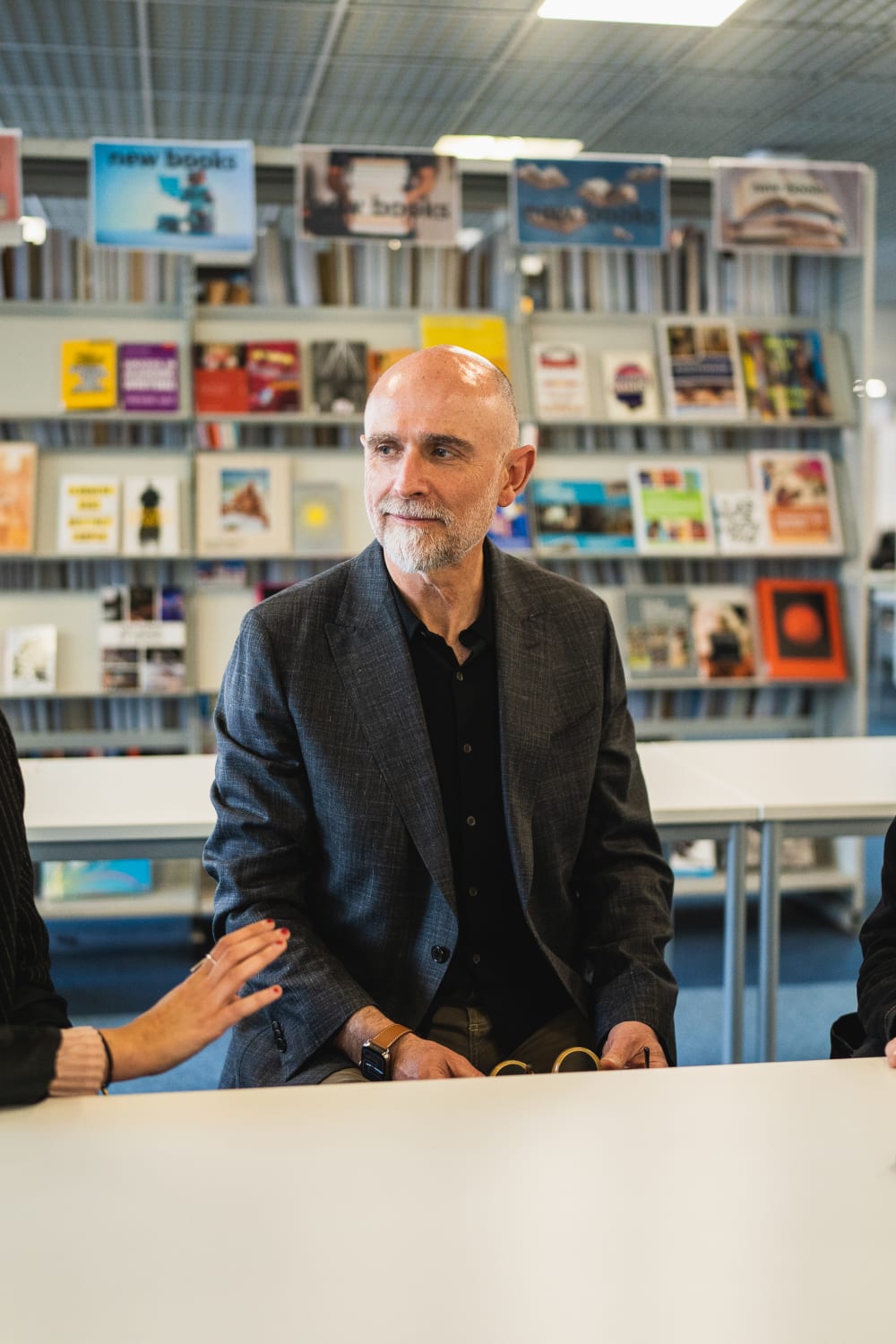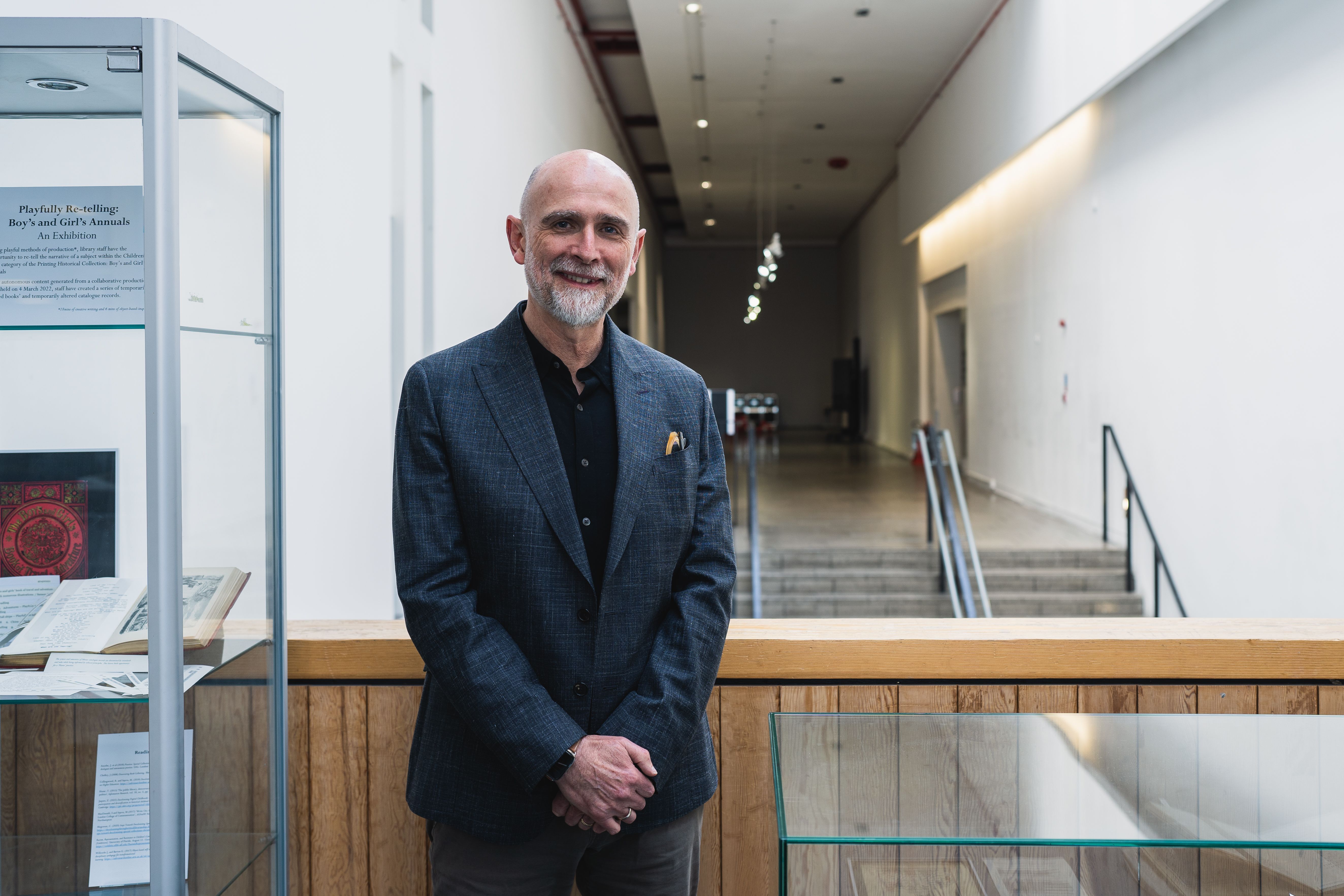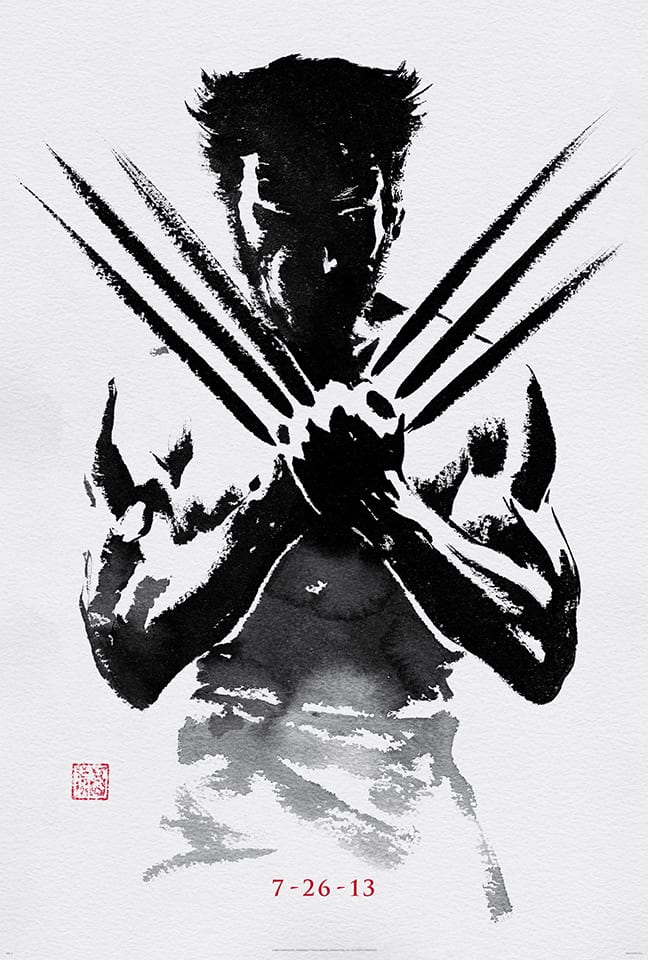
Meet: Clive Baillie

- Written byEleanor Harvey
- Published date 26 April 2022

Clive Baillie graduated with BA in Graphic Design in 1977 at what was then London College of Printing (now London College of Communication).
A celebrated art director and a Founding Partner of BLT Communications, Clive also donates 2 annual scholarships to LCC; the Clive Baillie Scholarship for Graphic Design (BA) and the Clive Baillie Scholarship for Graphic Design (MA).
Now based in LA, Clive recently visited LCC to meet his current scholars. We spoke to him about his time at LCP, his incredible career and what inspired him to donate to LCC.
You graduated in 1977 from the Graphic Design course. Why did you choose to study at London College of Printing?
Actually, my mother chose it. I grew up in Chelsea and then Wimbledon and then I went to boarding school in South England. I left school when I was 16 and I think she was very concerned about me having a proper career.
My father was in advertising, my mother was a photographer, so we were kind of arty. I was good at art and painting, and I don't know if an art school was on the list, but she wanted to make sure I had a career where I could make a living.
What was your time at LCP like?
I had a great time! Going from a school where you wore a uniform all the time to a place where you could look however you wanted to look. I made some very good friends there. I really appreciate the education I had there.
Leaving college, you don't have to know exactly what you want to do. I knew it was something in the design world. LCP gave me a foundation that I could go straight into work in production design and mechanicals.

Can you tell us a bit about your own creative journey? How did that lead to setting up BLT?
I used to love going up to the Leicester Square and looking at the movie posters, and I don't know if I was looking at something that I really wanted to do, I just thought movie posters were great.
After graduating I worked various jobs in design. I did some sound engineering work, and I worked at a company that did exhibition display work, but I was just itching to travel.
I lived in New York for about 6 or 7 months and worked in restaurants. And then a couple of us decided to drive across America to Los Angeles.
I got a job doing paste-up work and production work at a movie company. And that was my introduction to the entertainment industry. One day they asked if I wanted to try designing a poster, and that's how it started.
I worked in that business for 6-7 years, getting experience, making contacts and meeting other people. Eventually, I ended up at an agency where my now-wife Dawn, and our other partner Rick worked. All 3 of us were a little frustrated there. We developed good relationships with clients, and we saw that technology was going to be changing what we did; it's when the first Apple computers were coming out for creative work. We pushed our employer, but he was rather slow to pick that up.
So, I'm the B, Rick is the L, and Dawn is the T. When we started BLT, we saw it as a design company founded by designers, run by designers. My wife came from a fine art background; our partner Rick's background was in fine arts, but he also did design as well, so we knew the fundamentals of the industry; photography, mechanicals, paste-up work and airbrush.
How has the rise in technology changed how BLT works?
All creatives are digital natives now. Technology allows things to be done much faster. Whereas we had so much time to get work done when we first started the company, now clients expect things within a matter of hours.
I mean one of our favourite quotes is associated with Charles Darwin; “it's not the strongest of the species that survives, it's the one most adaptable to change.”
You have to adapt, and we've done that constantly over the last 30 years. Even though we had computers at the very beginning it was slow; in Photoshop you couldn't do layers. When we used to design it was cut and paste and airbrushing; you presented the idea and then if the client wanted to make a change, you'd have to rebuild it again from scratch. Now if a client doesn't like a certain head that you've used on someone, you can change it very easily on the same file. So, things are much quicker.
And it takes a lot of creative stamina because a lot of the campaigns are literally hundreds of pieces of work before you get to a final solution. We're working on some campaigns for a year, 2 years. You start before a film goes into production and the film can evolve from one thing to another thing, depending on the audience they're trying to attract. You’ve got to maintain a high level of stamina to see a project from beginning to end.
The way we're set up at BLT we have what we call pods, or creative groups. So, if one group has a project assigned and they get burnt out, we can then assign the project to another group. We see ourselves as many agencies within one agency.
Are there any campaigns from the last 30 years that you're particularly proud of?
I often get asked which campaign I'm most proud of and my answer is usually the last one that we’ve done; we're only as good as our last campaign. Yes, we have this amazing 30-year legacy of work but it's really about what was the last thing you did that was successful? Every time we get a campaign it's an opportunity to prove that we're still relevant.
That being said, my wife did the Silence of the Lambs campaign, which is a very iconic campaign.
We did one for the film Wolverine, which was set in Japan. The art director was doing the usual kind of work, taking photographs and stripping stuff together. I told him to go down to the local art bookstore and get a book on Japanese Kanji painting. The campaign ultimately showed the character Wolverine in the style of a Japanese painting. It was great cause the client took a risk and chose it.

The reason you're at LCC today is that you're meeting your scholars. You generously donate 2 scholarships to LCC students each year. What inspired you to start those scholarships?
Well, I've been a part of a very successful company that I've benefitted from, and I wanted to give back.
I go back to that foundation that I was given at LCP that allowed me to get a job in the industry and get started. I couldn't have built my career without the foundation I got at the College. So, I wanted to find a way to give back and support other students.
And how is it getting to meet the students you support today?
It's great! When I originally gave the first money to the College, I said “just do whatever you want with it. I don't mind what you do, you know better than I do about how that money will help”. So, they said we're going to set up the Clive Baillie Scholarship for Graphic Design, which I thought sounded nice!
Today, we're meeting Sonia and Rosie and when they tell me that they couldn't have done the course without the financial help, I'm really happy that I was able to help. I can't really help design-wise, I can't teach Rosie and Sonia. The teachers here are amazing, so I trust that the faculty are the people to do that.

You’re also involved in the LCC Industry Mentoring Program. How did you get involved in that?
I was asked to do it and I was happy to do it. We have a lot of staff and that's what we do every day at BLT; mentor employees to inspire them. And I can share my journey.
When we went into the lockdown the technology was there for us to stay in business. And now the technology means I can do the mentorship program. It doesn't matter where in the world you are, taking into account the time difference, it's easy to talk.
- Find out more about the Clive Baillie Scholarship for Graphic Design (BA)
- Find out more about the Clive Baillie Scholarship for Graphic Design (MA)
- Support and donate. Help the next generation of creatives and support our communities
- Discover opportunities to volunteer across UAL and register your interest